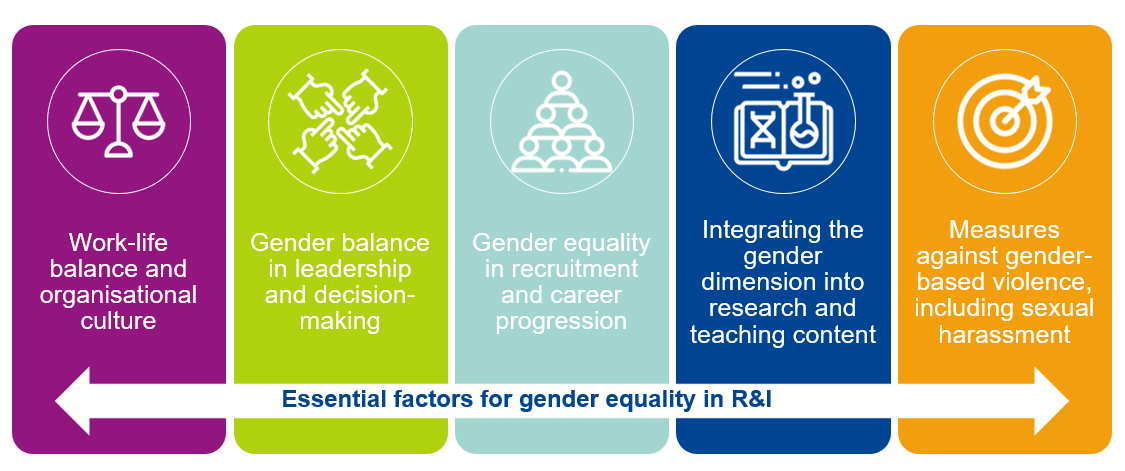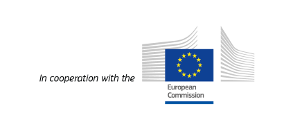What is a Gender Equality Plan
With the introduction/start of Horizon Europe, the European Commission made gender equality plans (GEPs) a basic requirement for participation in its research framework programme. It defined GEPs as:
a set of commitments and actions that aim to promote gender equality in an organisation through a process of structural change.
This policy instrument strives to sustainably transform organisational processes, cultures and structures within the field of research and innovation (R & I) to combat and reduce gender imbalances and inequalities. It should be holistic and comprehensive in the way that it addresses the whole organisation, engages all relevant stakeholders and tackles several gender equality issues in your organisation. Therefore, GEPs should not focus only on promoting career opportunities and equal access to resources for one gender; rather, they should be inclusive and target women and men in all their diversity.
Consequently, a GEP is a systematic and strategic instrument that establishes priorities and concrete objectives (based on a thorough status quo assessment), and the specific measures that will be implemented to improve gender equality within organisations and in the field of R & I. The timelines of the measures to be implemented and for measuring progress and success should be included in your GEP. You should also take into account that GEPs are to be designed as tools promoting reflexibility and learning by encompassing monitoring and evaluation activities. Finally, a GEP needs to establish clear responsibilities for different activities and to specify the general governance and leadership accountability for steering the GEP implementation and for the GEP’s progress and results.
See also the additional paragraphs of this section for more characteristics of effective GEPs.
The process of developing and implementing a GEP can be broken down into six different steps, each requiring specific types of activities and interventions.
- Step 1: getting started. In this step, you will need to familiarise yourself with the GEP concept and how it fits with your organisation and the specific context of your organisation. You also need to identify and approach potential allies and supporters of a GEP in your organisation.
- Step 2: analysing and assessing the status quo in your organisation. In this step, sex-disaggregated data is collected and organisational procedures, processes and practices are critically reviewed to detect any gender inequalities and their causes.
- Step 3: setting up a GEP. In this step, you will need to identify objectives, set your targets and measures to remedy the identified problems, allocate resources and responsibilities, and agree on timelines.
- Step 4: implementing a GEP. In this step, you will implement the planned activities and undertake outreach efforts to gradually expand the network of stakeholders supporting the GEP implementation.
- Step 5: monitoring progress and evaluating a GEP. Through monitoring and evaluation activities you will assess the implementation process and the progress achieved against the aims and objectives identified in your GEP. Findings from the monitoring and evaluation exercise(s) allow you to adjust and improve your interventions.
- Step 6: what comes after a GEP? Based on the results of steps 4 and 5, you need to develop a new GEP that builds on your experiences, learnings and achievements and that also ensures the sustainability of the efforts started in previous GEP implementation rounds.
The eligibility criterion in Horizon Europe sets out GEPs as including mandatory and recommended building blocks:
- mandatory process-based elements, which represent standard minimum components of action plans to promote gender equality;
- recommended content-related elements, which are key gender equality issues that a GEP should seek to address.

For more details on the Horizon Europe eligibility criterion, see the the section ‘Horizon Europe gender equality plan eligibility criterion’ and the frequently asked questions (FAQs) on GEPs and the Horizon Europe Guidance on Gender Equality Plans, both published by the European Commission.
The Horizon Europe Guidance on Gender Equality Plans, published by the European Commission, stipulates that, if organisations already have other strategic documents in place, these can be considered as equivalent to a GEP. However, it is advisable to review these plans and strategies to find out if they comply with the recommendations and advice compiled in this toolkit and to update them accordingly to ensure full alignment and effectiveness.
Besides the Horizon Europe eligibility criterion, which establishes the basic requirements for a GEP to set an effective and sustainable change process in motion, there are several other relevant features of a GEP that you should know about before you start developing and implementing your GEP.
See the proportion of research organisations in Europe that take actions or measures towards gender equality:
In order to view videos and webinars or further tools and resources on the topics in this section, switch between the respective tabs. Otherwise, click below to continue to the next section and learn more about the terminology and definitions used in the GEAR tool.
- Video ‘Gender equality policies in European research: good practice criteria’ by the EU-funded project ‘Gender equality in the European research area community to innovate policy implementation’ (GENDERACTION) provides an overview of the design of efficient gender equality policies that are also relevant for GEPs.
- Videos by the EU-funded project ACT on GEPs as an eligibility criterion in Horizon Europe provide a short introduction to this topic. Watch the short or the extended version here:
- Webinar ‘Introduction to gender equality plans’ (2020), developed by the EU-funded project Gender Equality Academy, aims to explore the concept of institutional change for gender equality in research-performing and research funding organisations, and how GEPs can be used for implementing it in view of achieving the three main European research area objectives.
For more videos and webinars on GEPs, see ‘Step 3: setting up a gender equality plan’.
- The Horizon Europe Guidance on Gender Equality Plans, published by the European Commission in October 2021, provides explanations for and examples of developing and implementing GEPs in compliance with the Horizon Europe eligibility criterion.
- The FAQs on GEPs provide a short overview of the most important practical questions concerning GEPs in Horizon Europe.
- The European Institute for Gender Equality (EIGE) toolkit on institutional transformation is targeted at public organisations that want to initiate a profound change process that affects their internal values, beliefs, rules and regulations, but also their external environment.
- The EU-funded project ‘Taking a reflexive approach to gender equality for institutional transformation’ (TARGET) developed guidelines on how to design customised GEPs, which include examples from TARGET and also from other EU-funded projects.
- In their paper, Clavero and Galligan (2021) explore how GEPs can trigger transformative change towards gender equality in higher education, concluding that more attention should be paid to power structures within academia.
- The paper ‘Institutions developing excellence in academic leadership (IDEAL): a partnership to advance gender equity, diversity, and inclusion in academic STEM’ by Bilimoria and Singer (2019) presents lessons learnt from the IDEAL programme, which could be helpful when designing GEPs in your organisation. IDEAL was funded by the (US) National Science Foundation’s ADVANCE (Organizational Change for Gender Equity in STEM Academic Professions) programme.
- The EU-funded project EFFORTI developed an evaluation framework for gender equality measures in R & I that is also helpful for planning gender equality measures. At the heart of this approach is a logic model, which is briefly described in a paper by Bührer et al. (2019): ‘Evaluation framework for promoting gender equality in research and innovation: how does gender equality influence research and innovation outcomes and what implications can be derived for suitable evaluation approaches?’. The EFFORTI toolbox (v2.0) allows you to generate your own logic model for your GEP.
